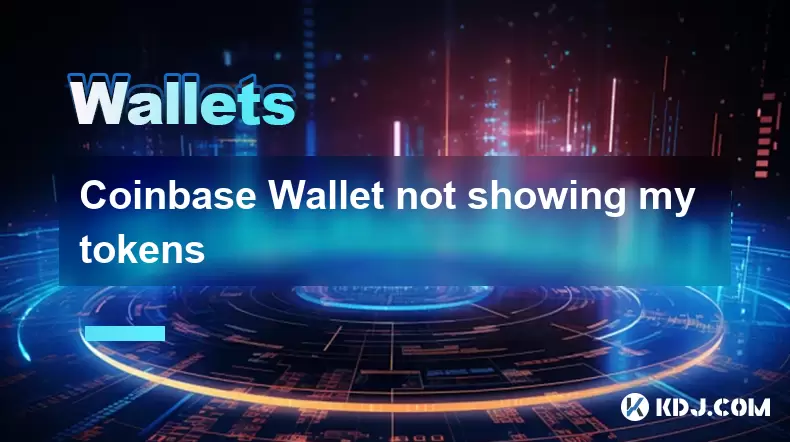-
 Bitcoin
Bitcoin $118100
-0.44% -
 Ethereum
Ethereum $3585
5.43% -
 XRP
XRP $3.434
5.65% -
 Tether USDt
Tether USDt $1.000
0.02% -
 BNB
BNB $743.8
3.89% -
 Solana
Solana $178.7
3.84% -
 USDC
USDC $1.000
0.03% -
 Dogecoin
Dogecoin $0.2381
12.81% -
 TRON
TRON $0.3270
3.62% -
 Cardano
Cardano $0.8315
4.93% -
 Hyperliquid
Hyperliquid $44.51
-4.42% -
 Stellar
Stellar $0.4710
1.52% -
 Sui
Sui $3.896
-2.51% -
 Chainlink
Chainlink $18.09
6.98% -
 Hedera
Hedera $0.2681
9.31% -
 Bitcoin Cash
Bitcoin Cash $516.7
4.83% -
 Avalanche
Avalanche $23.95
6.96% -
 Shiba Inu
Shiba Inu $0.00001490
5.67% -
 UNUS SED LEO
UNUS SED LEO $8.966
0.80% -
 Toncoin
Toncoin $3.294
4.39% -
 Litecoin
Litecoin $105.4
4.69% -
 Polkadot
Polkadot $4.356
5.30% -
 Uniswap
Uniswap $10.29
17.25% -
 Monero
Monero $327.9
-3.04% -
 Bitget Token
Bitget Token $4.942
4.33% -
 Ethena USDe
Ethena USDe $1.001
0.08% -
 Pepe
Pepe $0.00001348
2.17% -
 Dai
Dai $1.000
0.02% -
 Aave
Aave $320.8
0.58% -
 Bittensor
Bittensor $411.8
-4.07%
Can Trezor be hacked
Trezor hardware wallets are highly secure due to offline private key storage, open-source firmware, and strong protections against physical and digital attacks.
Jul 18, 2025 at 08:49 am

Understanding the Security Framework of Trezor
Trezor is a hardware wallet designed to securely store cryptocurrency private keys offline, which makes it inherently more secure than software wallets. The firmware that powers Trezor devices is open-source and regularly audited by security experts. However, like any digital device, Trezor can be vulnerable to certain types of attacks if not handled correctly. These vulnerabilities are typically not in the device itself but in how users interact with it or how external threats attempt to exploit human error.
One of the most robust features of Trezor is its use of secure element chips, which protect against physical tampering and unauthorized access. Additionally, two-factor authentication (2FA) and recovery phrases further enhance the wallet’s security profile. Despite these measures, understanding potential attack vectors is essential for maintaining asset safety.
Possible Attack Vectors on Trezor Devices
Although Trezor wallets are built with strong security protocols, there are several scenarios where unauthorized access could occur:
- Phishing attempts: Scammers may try to trick users into entering their recovery phrase on fake websites.
- Physical theft: If someone gains physical access to your Trezor and knows your PIN, they may be able to access funds.
- Supply chain attacks: In rare cases, compromised firmware during manufacturing or shipping could introduce malicious code.
- Malware on connected devices: If you're using a computer infected with malware while connecting your Trezor, keystrokes or clipboard data might be intercepted.
Each of these risks highlights the importance of user vigilance and safe practices when managing cryptocurrency assets.
How Trezor Protects Against Hacking Attempts
Trezor implements multiple layers of defense to minimize the risk of hacking:
- Offline signing: Private keys never leave the device, meaning even if your computer is compromised, the keys remain secure.
- PIN protection: After a limited number of incorrect PIN entries, the device wipes itself to prevent brute-force attacks.
- Encrypted communication: All data transferred between the device and computer is encrypted.
- Recovery seed verification: Users can verify their recovery phrase directly on the device, ensuring it hasn’t been altered.
These mechanisms significantly reduce the chances of successful hacking, especially compared to custodial services or hot wallets that are constantly online and exposed to threats.
Real-World Incidents Involving Trezor
There have been no known cases of a Trezor device being hacked through its firmware or hardware under normal usage conditions. Most reported breaches involving Trezor stem from social engineering tactics rather than technical exploits. For example:
- Users who shared their recovery phrases via chat or email were later scammed out of funds.
- Fake customer support scams convinced victims to install malicious apps that mimicked Trezor interfaces.
- Phishing domains closely resembling official Trezor sites led users to enter sensitive information unknowingly.
In each case, the device itself remained uncompromised, but user actions inadvertently exposed private keys or credentials.
Best Practices to Secure Your Trezor Wallet
To ensure your Trezor remains as secure as possible, follow these guidelines:
- Store your recovery phrase offline and away from prying eyes; avoid taking photos or saving them digitally.
- Always double-check URLs before entering any sensitive information.
- Enable passphrase protection for an added layer of encryption.
- Use a trusted and updated computer when accessing your wallet.
- Never share your PIN or recovery phrase with anyone, including individuals claiming to be from Trezor support.
- Keep your Trezor firmware up to date via the official website or app.
By adhering to these practices, you dramatically reduce the risk of falling victim to common hacking techniques.
Frequently Asked Questions
Is Trezor completely unhackable?
No system is 100% immune to all forms of attack. However, Trezor's design minimizes the possibility of remote hacking, especially when used correctly. Most breaches involve user-side errors such as phishing or physical theft.
Can malware on my computer steal funds from my Trezor?
While malware cannot extract private keys from the Trezor device itself, it can capture your passwords or clipboard contents, potentially leading to fund loss. Always use a clean, trusted machine when interacting with your wallet.
What should I do if my Trezor is stolen?
If your device is stolen, immediately move your funds to a new wallet using your recovery phrase. Ensure the recovery phrase was never stored digitally or in an accessible location.
Does Trezor store my private keys online?
No, Trezor never stores private keys online or on third-party servers. All keys are generated and stored locally within the device, ensuring full user control at all times.
Disclaimer:info@kdj.com
The information provided is not trading advice. kdj.com does not assume any responsibility for any investments made based on the information provided in this article. Cryptocurrencies are highly volatile and it is highly recommended that you invest with caution after thorough research!
If you believe that the content used on this website infringes your copyright, please contact us immediately (info@kdj.com) and we will delete it promptly.
- Freedom Gold Pack: The Legacy Coin Defining 2025
- 2025-07-19 06:30:13
- Trump, the GENIUS Act, and Stablecoin Regulations: A New Era for Crypto?
- 2025-07-19 06:50:12
- Pi Network's Ecosystem Challenge: App Studio Sparks Innovation
- 2025-07-19 06:55:13
- Zebec Network's Bullish Engulfing Pattern: Price Forms and Future Outlook
- 2025-07-19 06:30:13
- XRP, Ripple, Bitcoin, Ethereum: Decoding the Crypto Landscape
- 2025-07-19 05:50:13
- Penny Altcoins Eyeing $1 in Q3 2025: Cardano, BlockchainFX, and the Hunt for Crypto Gold
- 2025-07-19 05:10:13
Related knowledge

Can I use Coinbase Wallet without a Coinbase account?
Jul 18,2025 at 04:35am
What is Coinbase Wallet?Coinbase Wallet is a self-custodial wallet that allows users to store, send, and receive various cryptocurrencies directly on ...

How to add Arbitrum to Coinbase Wallet
Jul 18,2025 at 03:00pm
Understanding Arbitrum and Its Integration with Coinbase WalletArbitrum is a layer-2 scaling solution developed by Offchain Labs to enhance the speed ...

Coinbase Wallet not showing my tokens
Jul 18,2025 at 09:49am
Understanding Coinbase Wallet Token Display IssuesIf you're experiencing issues where Coinbase Wallet not showing my tokens, it can be frustrating, es...

Coinbase Wallet Chrome extension not working
Jul 19,2025 at 05:14am
Understanding Coinbase Wallet Chrome ExtensionThe Coinbase Wallet Chrome extension is a browser-based cryptocurrency wallet that allows users to inter...

Does Coinbase Wallet have a desktop app?
Jul 18,2025 at 12:08am
Understanding Coinbase Wallet and Its Core FeaturesCoinbase Wallet is a non-custodial cryptocurrency wallet developed by Coinbase, one of the leading ...

Coinbase Wallet not syncing
Jul 18,2025 at 07:49am
Understanding Coinbase Wallet Syncing IssuesWhen users encounter problems with Coinbase Wallet not syncing, it typically means that the wallet is unab...

Can I use Coinbase Wallet without a Coinbase account?
Jul 18,2025 at 04:35am
What is Coinbase Wallet?Coinbase Wallet is a self-custodial wallet that allows users to store, send, and receive various cryptocurrencies directly on ...

How to add Arbitrum to Coinbase Wallet
Jul 18,2025 at 03:00pm
Understanding Arbitrum and Its Integration with Coinbase WalletArbitrum is a layer-2 scaling solution developed by Offchain Labs to enhance the speed ...

Coinbase Wallet not showing my tokens
Jul 18,2025 at 09:49am
Understanding Coinbase Wallet Token Display IssuesIf you're experiencing issues where Coinbase Wallet not showing my tokens, it can be frustrating, es...

Coinbase Wallet Chrome extension not working
Jul 19,2025 at 05:14am
Understanding Coinbase Wallet Chrome ExtensionThe Coinbase Wallet Chrome extension is a browser-based cryptocurrency wallet that allows users to inter...

Does Coinbase Wallet have a desktop app?
Jul 18,2025 at 12:08am
Understanding Coinbase Wallet and Its Core FeaturesCoinbase Wallet is a non-custodial cryptocurrency wallet developed by Coinbase, one of the leading ...

Coinbase Wallet not syncing
Jul 18,2025 at 07:49am
Understanding Coinbase Wallet Syncing IssuesWhen users encounter problems with Coinbase Wallet not syncing, it typically means that the wallet is unab...
See all articles

























































































